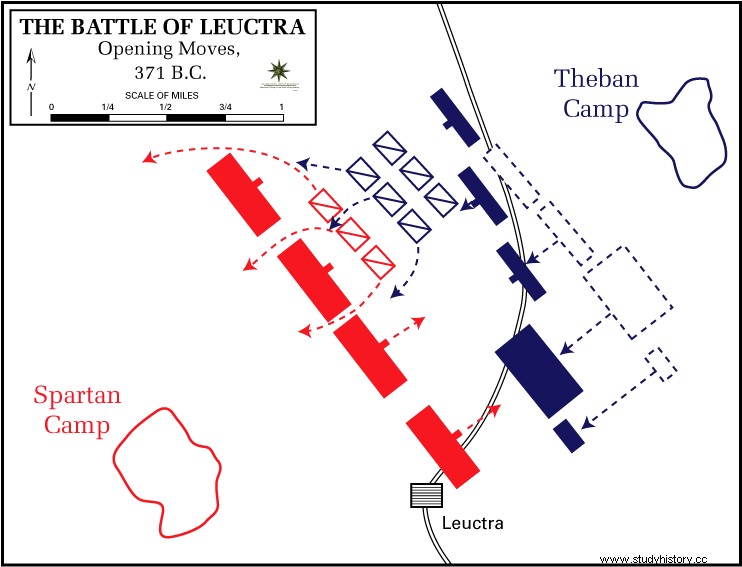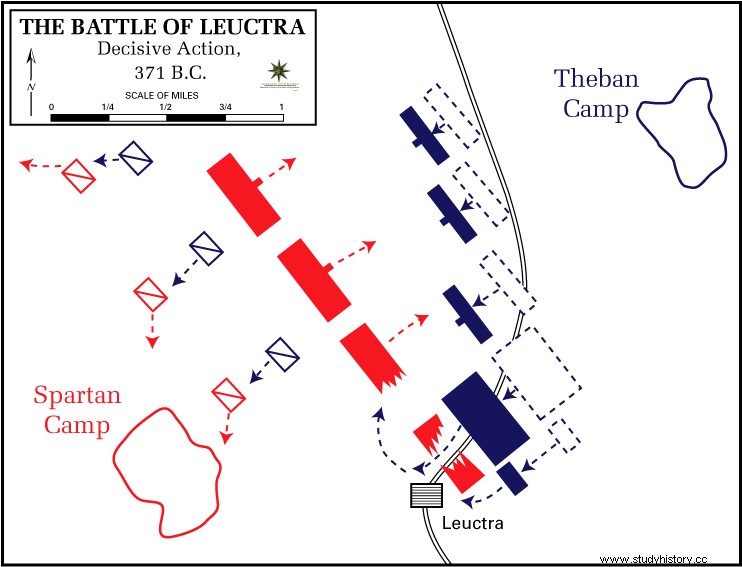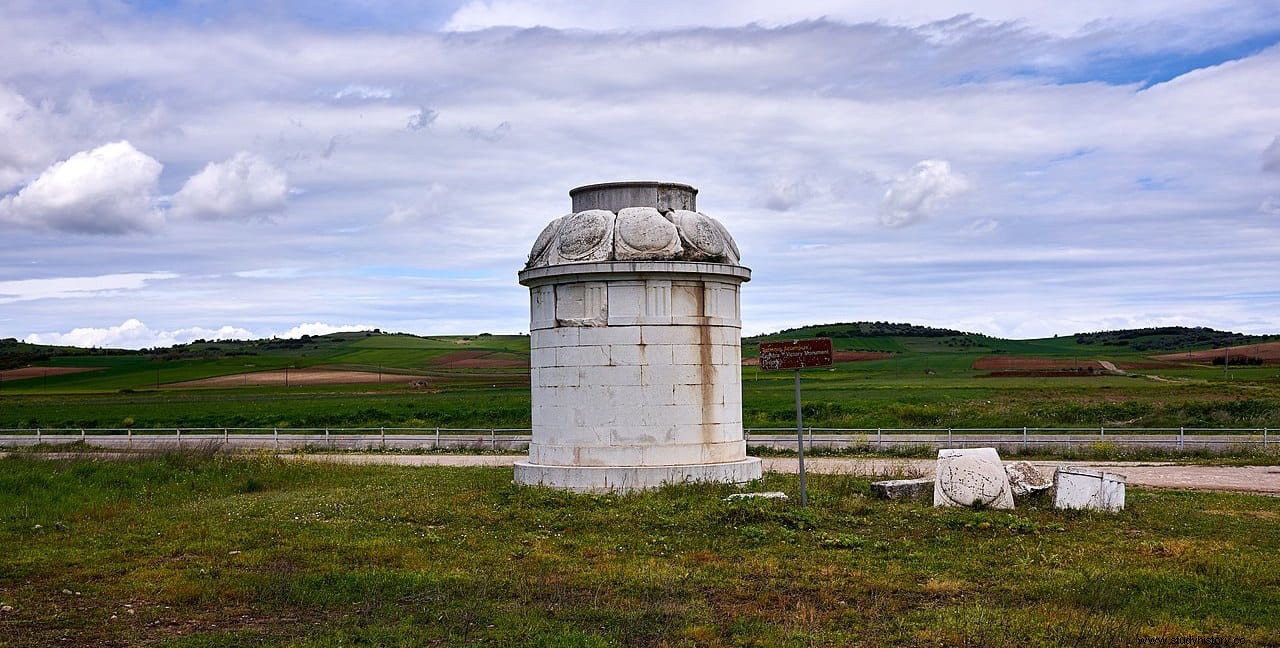The staggered formation in the military field it is a type of formation where the units are arranged diagonally. Each one is placed just behind and to the right of the previous one (or to the left, but all on the same side). Throughout history it has been used on many occasions and by many armies and countries.
From the infantry, through the cavalry, the armored vehicles and even the aviation, it is a formation that is still widely used today. Mainly because it gives the attacker excellent view range, while also allowing each unit to cover the previous one in the event of a flank attack.
It is known to have been used by Alexander the Great at the Battle of Gaugamela, by Hannibal at the Battle of Canas, or by the Confederate Army at the Battle of Gettysburg. But the first known use of the echelon formation corresponds to the Thebans, who used it, massacring the Spartan army that doubled their number, in the battle of Leuctra in 371 BC
Sparta dominated the Greek world after its victory in the Peloponnesian War in 404 BC. But in 371 B.C. the new democracy established in Thebes began to oppose it, expressing its intention to rebuild the Boeotian League dismantled by the Spartans.
Sparta could not tolerate the revolt and her king Cleombrotus I quickly marched on Boeotia taking an unusual route and surprising the Thebans. Both armies met in the vicinity of the town of Leuctra. The Spartans numbered 10,000 hoplites, including 400 Spartans, and 1,000 horsemen (estimated to be one-third of all Spartan citizens of fighting age). The Thebans and their Boeotian allies numbered 7,000 hoplites and 1,500 cavalry, including the 300-strong Holy Battalion.

The beotarchs Boeotians, magistrates who were in command of the federal army, were opposed to present battle, given the inferiority of forces. But one of them, Epaminondas, convinced them to employ a novel plan.
Cleombrotus arranged his lines following the typical hoplite formation, in columns 8 to 12 men deep, which was considered the perfect balance between penetrating power and maximum coverage. Following this tradition, he placed his elite force, the Spartans, on the right along with his personal guard and himself. The right of a battle was considered the place of honor .
Epaminondas arranged his lines in a completely different and novel way. Instead of placing his elite troops on the right he placed the Holy Battalion on the left , directly opposite the Spartans, and leading a contingent of hoplites in columns 50 men deep . The rest of the army in the center and on the right stood in staggered formation, each wing further back than the previous.
The battle began with the Spartan peltasts (mercenary light infantry) charging the Boeotian allies in the center and on the right, the least prepared and willing to fight, mostly farmers, who quickly fell back seeking shelter from the bulk of the army. I bath you. The Spartan cavalry charged but were repulsed by the Theban horsemen, who outnumbered and outnumbered them.

The Holy Band then charged the elite Spartan troops, surprising them as their own retreating cavalry helped disrupt their lines. The force of the attack by the Theban columns 50 men deep completely disrupted the Spartan elite, even outflanking them.
Seeing that the main phalanx had been broken and was being massacred, the rest of the Spartan army and their allies left the battlefield and retreated. It is estimated that the Spartan right wing alone suffered 1,000 dead, including King Cleombrotus and 400 Spartans.
Leuctra thus marked the end of Spartan domination over Greece, whose elite was already sufficiently diminished before the battle, and was considerably reduced after it. It was the beginning of the hegemony of Thebes that, under the military command of Epaminondas, carried out several campaigns against other city-states, which in the end did nothing but weaken Hellas and leave the way clear for the arrival of the Macedonians.

Some historians believe that the use of the echelon formation by Epaminondas (the first time the use of it is documented in history), was inspired by the maneuvers of his compatriot Pagondas in the battle of Delio (424 BC). Others believe that his use was not deliberate but was an intelligent adaptation to the circumstances of the moment. Outnumbered, Epaminondas had no choice but to form small phalanxes and march diagonally across the long Spartan lines.
What everyone agrees on is that it represented an innovation in the art of war, and that it was undoubtedly very effective.
There is also no doubt that Philip II of Macedon, who studied and lived in Thebes, took from the battle the ideas to develop the tactics that he and his son Alexander the Great would put into practice years later on their triumphal ride through Greece. and Asia Minor.
